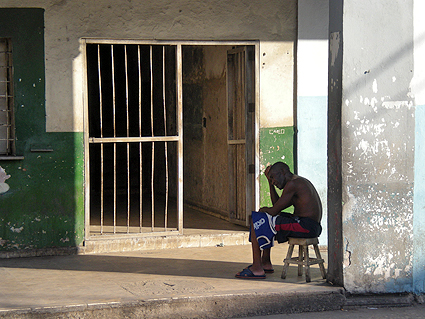The Promised Building Materials Aren’t There
Isbel Diaz Torres

Authorized supply outlets for the direct sale of construction materials to the Havana public are almost empty. Disappointment prevails in Marianao for residents hoping to buy their materials at 51st and 84th streets.
For many years, to take on repairs or construction work on the house or apartment of most any Cuban implied accessing “alternative mechanisms” (meaning illegal) for the purchase of materials. Recent government regulations took aim at quashing this completely, but up to now they don’t seem to have been very successful.
My friend Alberto tells me that at his community’s sales point, the only thing being offered to consumers is flagstone, plastic pipe, switches, light bulbs and floor tile. No gravel, sand or recebo (a cement-like binder), much less real cement or rebar. This last item is one of the most expensive and hard to find materials; yet at the same time its indispensable in complying with Cuban construction standards.
However, the Marianao folks are luckier than the people who go to the supply store in the municipality of La Lisa, also in the capital, where I could find only a few floor tiles when I stopped by there recently.

Another vital component for housing construction are cement blocks. These elements, which constitute the structural support for the immense majority of Cuban houses, arrive at this sales station in Marianao on the average of once every fifteen days.
A truck with 400 or 500 blocks is all that arrives in each shipment. With that quantity, the demand of a single person can be satisfied, which is why the residents of this community of 130,000 have organized their own priority list, which they update daily.
In the last two months the truck has only come by on four occasions. The pressure of the demand compelled the station’s management to put up a poster that insists “100 blocks per person.” Alberto is already devising a way put his name several times of the list, because that quantity is insufficient for everything that he wants to build in his little house.
On top of that, the situation has now become aggravated: The State has temporarily suspended the delivery of materials because of a hole in the roof of the supply station. Nevertheless, the workers continue offering the materials on hand but the cement blocks have stopped arriving.
The government’s idea to sell building materials without a structural or a productive basis—isn’t working very well. In fact, I’ve always wondered: if they didn’t have materials yesterday, where do they hope to get them from today?





